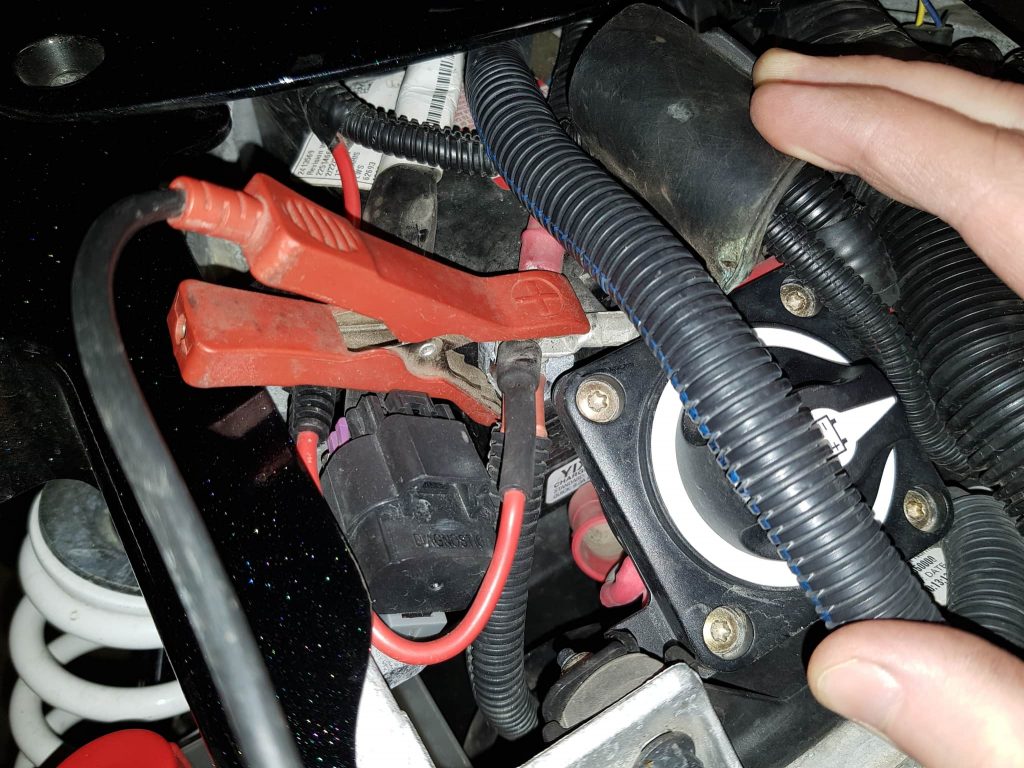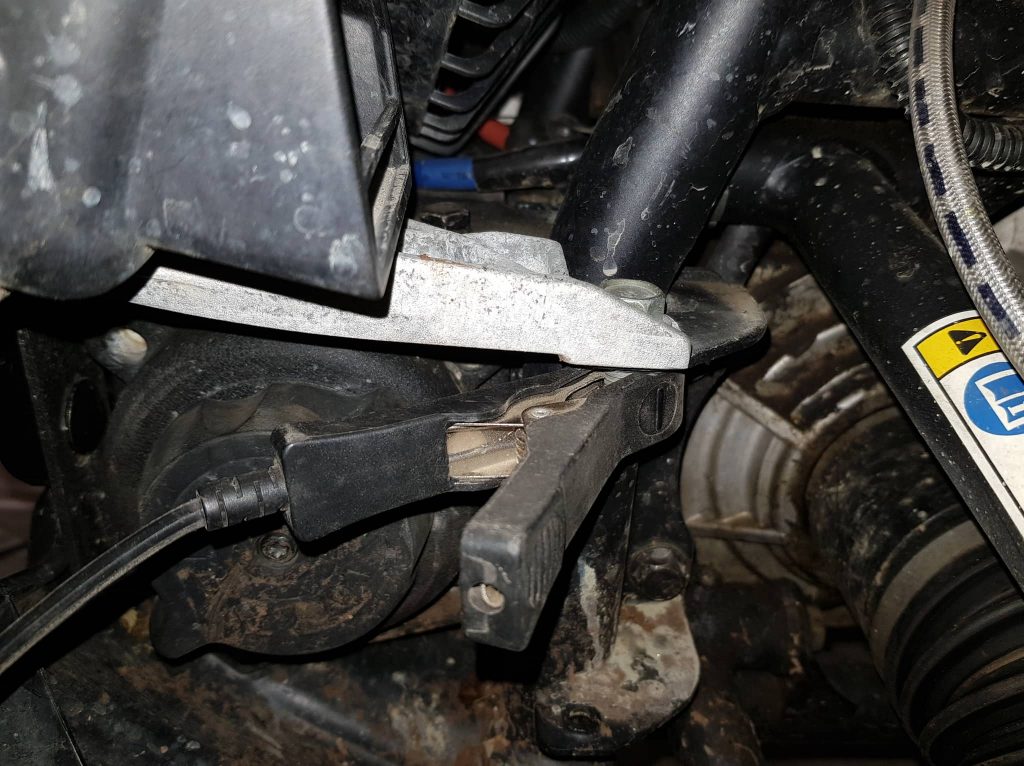How To Charge An Atv Battery With Car Charger
From time to time, you may need to charge your ATV or UTV battery using an external charger. The bike’s own charging system does not always have the capacity to keep up with the battery drain even from regular use. Some new batteries will also need charging before use.This guide will tell you how to charge any ATV or UTV battery and answer some of the most common questions people have about the charging process.Reading: how to charge an atv battery with car charger
How to charge an ATV or UTV battery
Contents
ATVs do have a built-in charging system that is powered by the bike’s engine. But the current it provides is not very high.You can charge the battery by going for a long ride, but it’s not always practical. Instead, you may use an external battery charger.Tools and gear required:
- A suitable battery charger (in most cases a low-amp intelligent charger)
- Latex gloves (in case of battery acid spill)
- Protective eyewear
Step 1: Park the ATV or UTV somewhere dry and well-ventilated
The battery and charger must stay dry during the whole charging process.Also, the battery must be somewhere well-ventilated to vent out any gases from the charging process.Overcharging or even just charging a battery causes a chemical process that releases explosive hydrogen gas. With proper venting, you minimize the risk of the gas gets ignited by a spark, which may cause an explosion.A garage or shed where you can leave the garage door open would be a good location.If you don’t have a dry and well-ventilated area that will fit your whole ATV, consider removing the battery from the bike to charge it.The ATV and all accessories should be turned off when charging to prevent sparks.
Step 2: Locate and inspect the battery
You need to make sure you have proper access to the battery. Some ATVs will have their battery hidden behind a plastic cover that needs to be removed for access. Others have the battery readily accessible without removing any parts.The battery on my Polaris Sportsman XP1000 is hidden under the front cargo rack cover.After locating the battery you should visually inspect it to look for cracks or other damages. Never attempt to charge a damaged battery!
Step 3: Identify what type of battery you have
Before you hook up the charger, you need to identify what type of battery you have.Some types of batteries require a specific type of charger to charge properly, or that you add a few additional battery-specific steps to the charging process.
What type of battery is in an ATV or UTV?
Here is a list of the different types of batteries you may find on an ATV or UTV, and how to tell them apart.All batteries should have a label that indicates the battery-type, but sometimes these have worn off. Check out this post to learn what ATV battery numbers mean.Also, look for a part number. A quick google search will tell you exactly what battery you have if you enter this number.Type 1: Conventional flooded lead-acid battery (FLA)FLA batteries are a non-sealed wet-cell style of batteries that uses lead plates and liquid battery acid as an electrolyte. On top of the battery, there are removable caps, one for each cell. The caps are either threaded or pull-out style.Another way of telling that you have an FLA battery is by its semi-transparent casing, where you will see the water level inside the battery. There are marks to indicate the maximum and minimum level of electrolyte.FLA batteries only: Before you begin charging you should remove the caps to verify that the lead plates are covered by electrolyte fluid. Add distilled water if the level is below the minimum mark.Type 2: Sealed Lead-acid battery (SLA) / Valve regulated lead-acid battery (VRLA)SLA and VRLA are different acronyms for the same type of battery. Their construction is quite similar to conventional flooded batteries, but there is one main difference.If you overcharge a sealed battery, there is no way to open it to add more fluid. They have a flat top with no filling ports or caps. Never try to pry-open a sealed battery!Type 3: Lithium-ion batteryThe easiest way to know that you have a Lithium-ion battery is to feel its weight. They weigh about 1/10th or less of other types of batteries.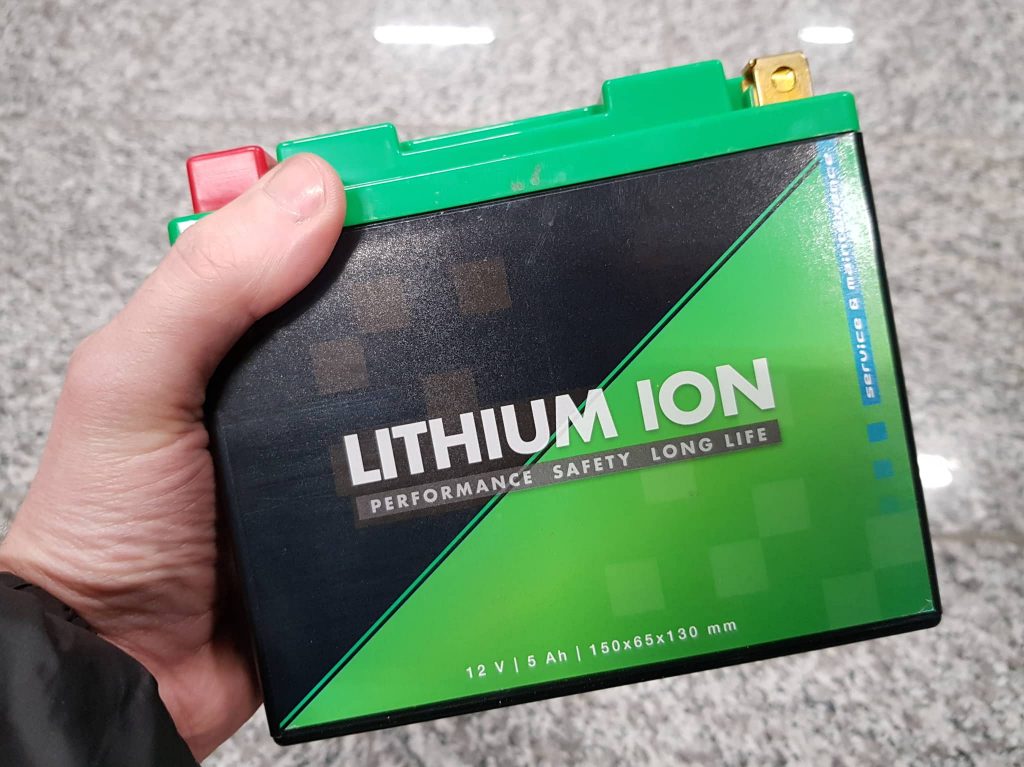
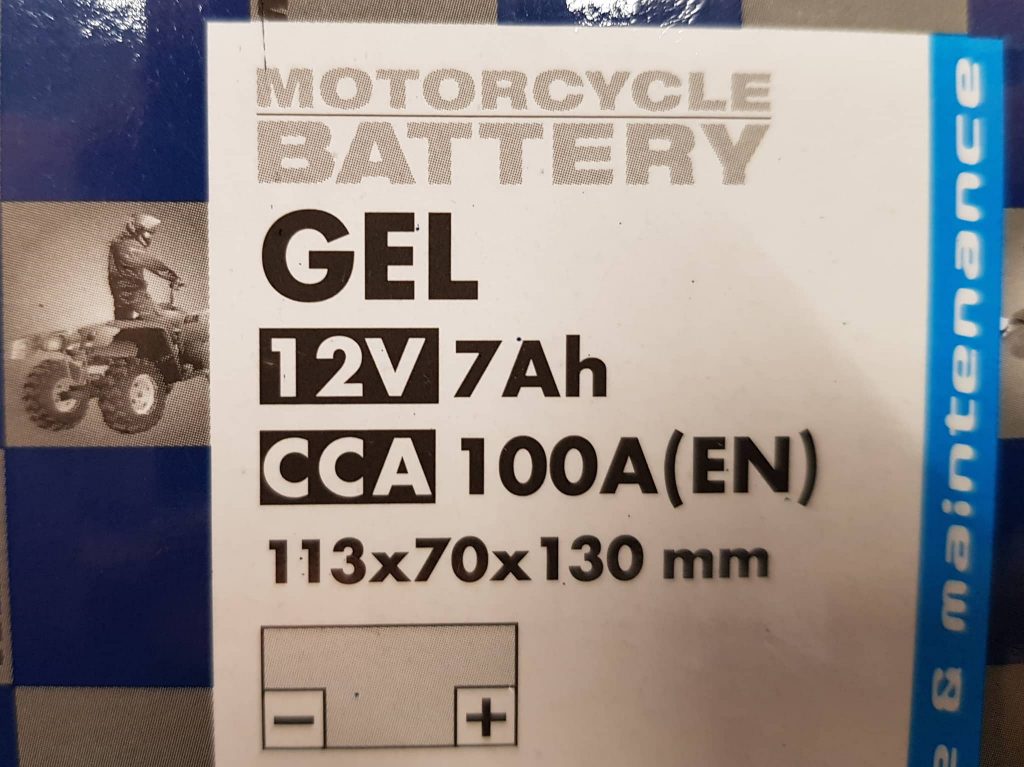
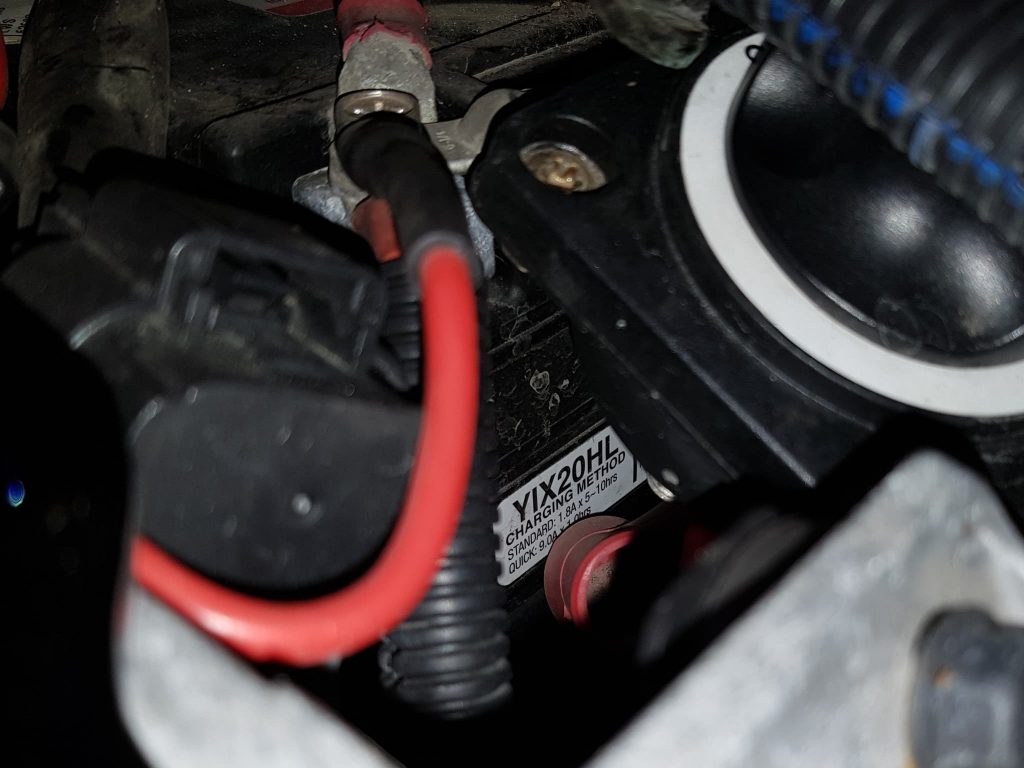
Step 4: Make sure you have the right charger
If you use the wrong type of charger for your battery type, or set up a manual charger incorrectly, overcharge or undercharge the battery which may cause permanent damage.Using a good quality, intelligent charger that is compliant with your type of battery is the easiest way to charge your battery safely. Under certain conditions, you may also use a manual bench-style charger.
- The charger should be 12V (as long as your battery is 12V).
- The charger should be able to provide a low amp charge rate, typically 1-3A.
Flooded lead-acid (FLA) batteryThese batteries are the least picky when it comes to choosing a charger. If you overcharge a flooded battery, you may just add distilled water. Any manual or automatic charger will work as long as they are the right voltage and have low-amp settings.Absorbed glass mat (AGM) and sealed lead-acid (SLA) batteriesWhile it is possible to charge both AGM and SLA batteries with a manual charger, it is not recommended. If you don’t monitor the charging process carefully, you may overcharge, which would cause gassing and water depletion.Sealed batteries cannot be topped off, so the damage is permanent. That’s why it’s better to always use an intelligent charger for any sealed battery like AGM and SLA batteries.Some, but not all intelligent chargers, will have a dedicated AGM charge mode. AGM and SLA batteries have a very similar charge profile. Therefore most brands of AGM batteries, as well as SLA batteries, will have no problems with any 12-volt intelligent battery charger as a charge source.According to Optima (https://optimabatteries.com), a high-quality AGM compliant charger may improve battery performance and lifespan, but most battery chargers and maintainers will work just fine on Optima brand batteries and other AGM batteries.GEL-cell batteryGEL-cell batteries are the most sensitive and require a very specific charge profile. The higher voltage from a flooded or AGM charger causes permanent hydrogen bubbles in the gelled electrolyte, which reduces battery capacity or ruin the battery altogether.Never use a constant current manual charger to charge a GEL-cell battery, only a GEL-cell compliant intelligent charger. The charger should have reliable temperature sensing, voltage regulation, and a specific GEL-cell mode.Read more: how to be a good sub | Top Q&ALithium-ion batteryTechnically you can charge a lithium-ion battery with a manual charger, but it is not recommended. If you don’t follow a specific procedure, you will damage the battery permanently.It’s recommended that you only use a Lithium-ion compliant charger.Lithium-ions charge fast and at a higher voltage. A manual charger or even a standard intelligent charger will likely undercharge a Lithium-ion battery, which may damage the battery over time.
Step 5: Check the battery voltage with a voltmeter or multimeter
This step is not mandatory if you use a fully automatic charger that you know is compliant with your type of battery. The charger will do the job of choosing the right charge profile for you.But if you use a constant current manual style of a charger, you need to know the battery’s voltage to be able to monitor the charging process.In any case, the state of charge will tell you if your battery is completely dead or if it just needs to be topped off. It will also give you an indication of what charge time to expect.Note that different types of batteries reach the same state of charge at different voltage levels.
How long should you charge an ATV battery?
State of chargeCharge timeATV battery charge timeA simplified formula to calculate the charge time of an empty battery is by dividing battery Ah rating with charging current in A (ampere). Charging a completely flat 15Ah battery with a 1,5A charger would take 10 hours.Charging times will vary depending on various factors:
- Depth of discharge
- Charging temperature
- Size and efficiency of the charging equipment
- Age and condition of the battery
- Batteries that can handle a more aggressive charge rate will charge faster.
If you have a smart battery charger, it will stop charging automatically as soon as the battery is fully charged. Usually, this should take no more than 12-16 hours unless the battery was completely flat.
Step 6: Make sure you have clean connections
Do not plug the charger to a wall socket yet.Your charger has one positive lead and one negative lead. The positive lead will have a red clamp and the negative lead clamp will be black.The red clamp will be connected to the positive battery terminal. To identify the positive battery terminal, look for one or more of these markings:
- “+” symbol
- “P” symbol
- “POS” symbol
- Red protective rubber or plastic cap (may also be black)
Make sure the terminal is clean to ensure a proper connection. Use a wire brush, and remember to wear your eye protection.The negative will be connected to frame ground. Look for a bare, solid metal part of the frame or engine. Bare metal bolts are often good options. Make sure your ground connection is clean as well.
Why is connecting to frame ground better than connecting to the negative battery terminal?
When removing the first lead after charging, there might be a small spark. It’s best if this spark happens somewhere away from the battery where there is less risk of gas build-up from the charging process.Modern intelligent chargers are designed not to overcharge the battery, so you will most likely have no issues if you choose to connect the negative lead directly to the negative battery terminal instead of the frame. After all, this is what most charger manuals will tell you to do.Connecting it to the frame or engine instead just adds one more layer of safety.From an electrical point of view, the battery will charge just as well whichever of the two options you choose.Your negative battery terminal will have either:
- “–” symbol
- “N” symbol
- “NEG” symbol
- Black protective rubber cap (never red)
Step 7: Attach the charger cables
Now that your connections are clean you can connect the charge leads.
- Begin by connecting the positive (red) lead to the positive battery terminal.
- Then connect the negative (black) lead to frame ground.
Step 8: Set the correct charge current or charge mode
Now plug the charger to a wall socket, but make sure it is not charging yet.Manual chargerYou need to set the charge rate (current) manually. A good rule of thumb to know what amperage your battery should be charged at is to divide its Ah- rating by ten. A 15Ah battery should use a charger with a power output of no more than 1,5A. You should never charge an ATV battery with more than 3A.Intelligent chargerChoose the right charge-mode for your type of battery. Using the wrong mode on an intelligent charger or may overcharge or undercharge the battery.
- FLA, SLA: Choose lead-acid low amp mode. Refer to the user manual to make sure the charge rate is not above 1/10th of the batteries ah-rating.
- AGM: Chose lead-acid mode or AGM mode if available.
- GEL: Choose only GEL mode. Other modes will overcharge a GEL-cell battery.
- Lithium-Ion: Choose Lithium-ion mode. Other modes will undercharge a lithium-ion battery.
Step 9: Initiate the charging process
You are now ready to initiate the charging process. Make sure you have enough time to charge the battery to full charge, or it will sulfate.Do not attempt to start an ATV or UTV when connected to an intelligent battery charger.
Step 10: Monitor the battery during the charging process
For all types of batteriesYou want to make sure the battery does not overheat during the charging process.If the battery becomes warm to touch, turn off the charger, let it sit for a few minutes to allow any gasses to vent out before removing the charge leads. Let the battery cool off before you continue charging it.For flooded lead-acid batteriesThe electrolyte levels should be monitored during the charging process. If it falls under the specified level in any of the cells, you should remove the cap and add distilled water until you reach the correct level.For manual battery chargersA manual charger won’t turn off when the battery is fully charged. You need to monitor the voltage to keep track of the battery’s current state of charge. Use the table from step 5 as guidance.When the state of charge is about 80%, you should turn down the amps to about half of what you started with. A lower amperage at the final part of the charging process will give you a slightly higher final charge rate, as well as reducing the risk of overcharging the battery.When you reach a full state of charge according to the table, the charger must be switched off or put in a maintenance-mode if available.
Step 11: Turn off or unplug the charger
Unplug the charger and let it sit for a few minutes to let any gasses vent before disconnecting the leads.Use a piece of cardboard as a fan if you suspect gas buildup over the battery.
Step 12: Disconnect the charge leads
As long as the charger is unplugged, it doesn’t really matter which lead you to remove first.But it is best practice to always start with the negative lead. There is no harm done if you accidentally touch ground with a negative lead.
Step 13: Make sure the battery holds a charge
Read more: How to get from beaver creek to denverWait a few hours and use a voltmeter or multimeter to check if the battery still holds a charge. If the voltage drops, there might be a problem with internal sulfation.It may be worth trying to charge the battery with a charger that has a specific desulfation mode before discarding the battery.
What to do if the battery won’t charge
Read this guide to troubleshoot a battery that wont charge or won’t hold a charge.
Why do you need to charge an ATV battery more often?
The charging system on an ATV is not as effective as the one you will find on a car, so it will need more time to charge the battery properly.Unless you do hour-long rides every time you start up your bike, it will likely draw more power to start the bike than it will be able to charge while you are running it.In addition, ATV batteries are relatively small in both size and capacity to keep the overall weight of the bike down.Combine that with a few power-hungry accessories like your ATV winch, and you will soon find your battery too low on power to start your bike. Leaving the battery on a low charge over time will also cause damage to the battery.That’s why it’s a good practice to charge it now and then to save you from problems down the road.
How often should you charge an ATV battery?
ATV batteries should be charged any time the battery voltage drops below 12.4 – 12.6 volts. Top off the battery each fall and each spring, and use battery tender to keep the battery healthy when the ATV is sitting for long periods without being used.
What are the charging stages?
A battery should be charged at three different stages for optimal performance and service life. An intelligent charger switch between the stages automatically.Automotive-style manual chargers do not have proper regulation for charging in stages. If you charge the battery too hard at the final stage, it won’t be able to reach a full charge.The three charging stages are:Bulk stage: At this stage, the battery will be charged up to about 70-80% of its capacity. The charger will be putting out a constant current determined by what charge mode or amp settings you have chosen. The voltage will increase gradually.Absorption stage: At this stage, the charger will maintain voltage to the battery, but will taper off the charging current gradually as the battery gets closer to a full charge. This allows you to reach a higher state of charge without the risk of overcharging the battery.Float stage: At this stage, the battery will be fully charged. All the charger is doing providing a small maintenance charge to keep the battery fully charged. Both voltage and current will be reduced.
Why do chargers have different charging modes?
Intelligent chargers usually have different charge modes to choose from. Each charge mode will have a specific set of parameters that are optimized for different types and different sizes of batteries.The charger uses microprocessors to collect information from the battery to see its current state of charge and to adjust the voltage and current accordingly.For example, a lithium battery reaches 80% state of charge at a different voltage than a flooded lead-acid battery and needs the voltage input to be adjusted accordingly. And a gel battery cannot take as high of a charge rate as an AGM battery and will require a lower amperage.All of these parameters are controlled by which charge mode you choose. Your chargers user manual will tell you more details about each charge mode your specific charger offer.
Should you disconnect the terminals from the battery when charging an ATV battery?
In general, there is no need to disconnect the battery terminals when you are charging an ATV or UTV battery, as long as you are using a fully automatic charger or a trickle charger at 1,5A or less.Hooking up a high current booster charger, however, may cause a voltage spike that may damage your bike’s electronics. But you should never use a high-amp manual style charger on an ATV in any case, so this should be a non-issue.If your bike, for some reason, has a high phantom drain, you may struggle to get any power to the battery. In this case, you should remove the negative terminal before charging your battery. Then you need to do some troubleshooting to identify what is draining your battery.Also, please note that boosting your battery by hooking it up to another ATV using non-protected jumper cables may create a voltage spike that has the potential to damage your bike’s electronics. Always use cables that have built-in electronic protectors, and you should be fine.
Do you need to remove the battery from the ATV or UTV during charging?
For basic maintenance charging, where you are just topping off a battery that seems a bit low on power, there is no need to remove the battery from the bike.When you are charging a brand new battery that has never been charged before or a battery that has gone completely dead, you might want to consider removing it.When doing a deep-charge, there is a slightly bigger risk for explosive hydrogen gas to build-up, as well as possible overheating.By removing the battery from the ATV, you won’t cause any harm to the bike in the unlikely event that something goes wrong.
Do you need to remove the caps when charging a flooded lead-acid battery?
Flooded lead-acid batteries have removable caps to add more electrolyte fluid (distilled water) if needed. There is one individual cap for each cell or a strip that ties several caps together.Some believe that you always need to remove these caps when you charge to let out any gas build-up. This is usually not necessary. Those caps are designed to vent any gas produced while charging, or there will be a separate vent.Refer to your specific battery’s safety instructions to verify whether the caps need to be removed or not.As long as the vents are not blocked (stuffed with mud, anyone?), you should have no issues leaving the caps in.The only time you need to remove the caps is when you wish to check the level of electrolyte or top off one or more cells that are low on fluid.When using a manual charger, you can remove the caps for a short period to give you an indication of when the charging process is finished.When you see hundreds of bubbles forming on top of the battery cells, you know that the battery is full. Any further charging is overcharging.PS! Remember that the gas you see forming is flammable, and the fluid is acidic. Never remove battery caps without wearing eye protection and vinyl gloves.
How to charge a new ATV battery?
The charging process described at the top of this post will work both for doing a deep charge on a new battery as well as doing a refresh charge to top off a battery where the voltage has dropped a bit too low.There are, however, a few things to keep in mind.
- Make sure the new battery is fully charged before you start using it, or it may never reach a 100% charge. This is true for all battery types except lithium-ion batteries. Some sealed batteries are sold already charged, but it is recommended to top off them as well before putting them to use.
- A full deep charge will create more heat and gasses than a refresh charge. It is recommended that you charge the new battery before you put it in the ATV to reduce the risk of damaging your bike.
- Lithium-ion batteries are shipped with a state of charge no higher than 30%.
- Some lead-acid batteries, both flooded and sealed, are sold as kits where the battery acid comes in a separate container. Before you can charge the battery, you need to activate the battery by adding the battery acid to the battery according to the manufacturer’s instructions. The process of adding the battery acid to the battery is usually thoroughly explained in the instructions that come with the kit, so we won’t cover this process in this post.
How to charge a deeply discharged or dead ATV battery
If you hook up the charger, but it fails to initiate it’s charging cycle, the battery voltage may have dropped below the minimum threshold recognized by the charger.To solve this, you can use a fully charged battery to trick the charger into starting the charging process.Tools and equipment required:
- A fully charged, healthy battery
- Protected jumper cables
Follow these steps:
Can you charge an ATV battery with a car charger?
You should not use a car charger or a typical trickle charger to charge an ATV unless it has specific settings to limit the amp output as low as 1-3 amps. Car chargers typically come with an output of 10A. Charging an ATV battery at 10 amps would overheat it and damage it permanently.
Can you charge an ATV battery with a car battery?
You can use jumper cables to jump-start an ATV battery from a car battery, but it is not a suitable method for doing a full charge. The car must stay off as long during the whole process.Read more: how to hack clash royale ios | Top Q&A
Last, Wallx.net sent you details about the topic “How To Charge An Atv Battery With Car Charger❤️️”.Hope with useful information that the article “How To Charge An Atv Battery With Car Charger” It will help readers to be more interested in “How To Charge An Atv Battery With Car Charger [ ❤️️❤️️ ]”.
Posts “How To Charge An Atv Battery With Car Charger” posted by on 2021-11-04 22:13:16. Thank you for reading the article at wallx.net

